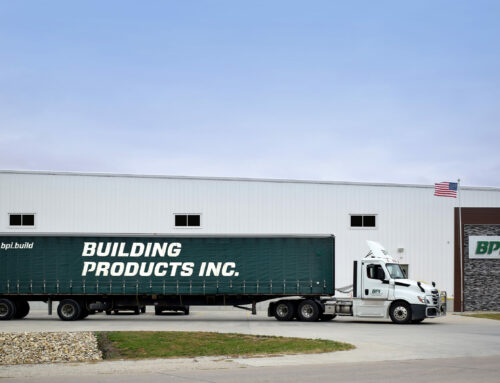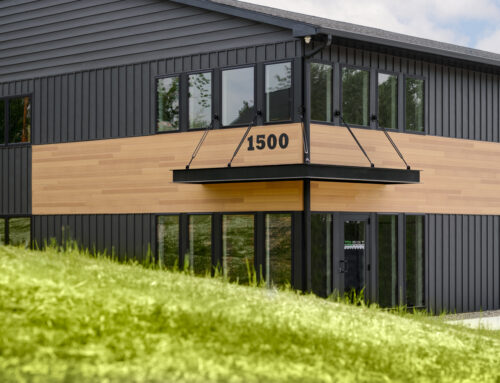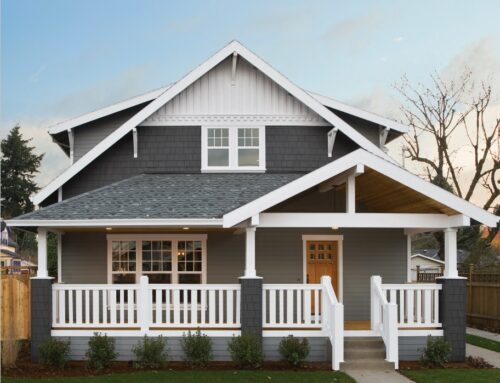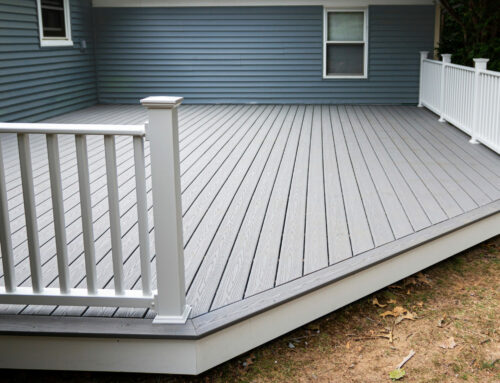 Reduce Your Total Cost by Partnering with BPI
Reduce Your Total Cost by Partnering with BPI
When builders ask for bids on a job, they often choose the lumberyard with the lowest price. However, that tactic will cost more by the end of construction, according to author Rikka Brandon.
In her article for LBM Journal, STRATEGY Z: Part II: Low Bid vs. Total Cost Purchasing—No Contest, Brandon states, “The only thing that purchasing on low bid price alone guarantees is you will never operate by lowest total cost—and total cost is the only thing that matters.”
To optimize total cost, builders need to differentiate between total cost purchasing and lowest bid. Any builder who’s been the casualty of unreliable suppliers, shoddy materials and poor service has felt the impact of these numbers. However, many don’t look at how these numbers add up at the end of the job – the total cost of purchasing.
Whether a builder gets the lowest total cost depends on their supply chain – who they get their building materials from and that dealer’s supplier(s). Choosing a lumberyard that partners with a great building materials supplier – a supplier that’s invested in its customers’ success and cost efficiency – will directly impact a builder’s bottom line.
When a lumberyard partners with a building materials supplier like BPI, they get the benefits of two-step distribution: uniform and competitive pricing, one-stop-shopping from a wide and available selection of materials, easy ordering, well-packaged products delivered on time, plus product expertise, support and training. All of these factor into BPI providing the lowest total procurement cost.
Lowest Total Procurement Cost vs Low Bid Procurement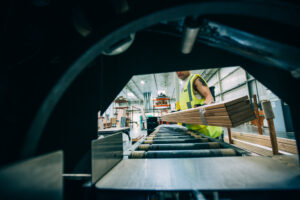
So, what is “total procurement cost” and why is the value better than the lowest bid, even if the initial price may be higher? Whether you’re a lumberyard or contractor, Brandon recommends factoring these elements into a total cost model:
- Bid price – serves as a baseline.
- Capability & capacity – Does the supplier have the expertise, capability and capacity to provide and deliver the needed supplies?
- Schedule & delivery – Does the supplier stick to a tight, disciplined schedule?
- Communication – Does your supplier engage in frequent, timely and proactive two-way communication to help you avoid mistakes, rework, extra purchase orders, and wasted materials?
- Participation in product development – Does your supplier have expertise and help your customers choose better products, eliminating unnecessary material and allowing them to build more efficiently?
- Quality – Does your supplier provide high quality products backed by good warranties?
- Pre-close rework – These expense oversights take the form of excess trips to the jobsite. The data reveals that many lumberyards make 5-10 excess trips at a cost of more than $250 per trip. And because most rework-in-process-cost is never billed, it adds up to $1,000 to $2,000 in added overhead.
BPI provides value to lumberyards by reducing buying costs that are part of the total procurement cost, comprised of Buying Costs and Holding /Carrying Costs as outlined in our article: How Lumber Dealers Can Reduce Procurement Costs.
 Using a Cost Reduction Strategy in Purchasing for Lumberyards
Using a Cost Reduction Strategy in Purchasing for Lumberyards
The elements of your total purchasing cost come with trade-offs. For example, if you spend a lot of time searching for the lowest price, the cost of shopping time will be higher. That’s where a distributor like BPI provides value. Also, that low price may come with poor service, which can lead to increased costs of expediting materials and correcting mistakes, ending up with increased paperwork, unhappy contractors and more.
What are Buying Costs and how does BPI lower those for lumberyards?
BPI prioritizes customer satisfaction first, instilling confidence that your dealership will receive the right products – at the right time – and without damage. With this model, BPI helps lower the following buying costs:
Price
BPI buys in bulk, allowing you to secure better pricing. They carry multiple product lines, so builders have a selection of product price points to choose from. BPI makes it possible for lumberyards and warehouses to optimize inventory management, which reduces waste while improving efficiency and cash flow.
Shopping Time
There is a cost for purchasers to price-shop with different distributors. Constantly buying from multiple distributors results in increased paperwork and can result in backorders, as many distributors will give their consistent customers a larger allocation of inventory. Lumberyards can save money by placing fewer large orders instead of multiple smaller orders to reduce purchasing time. This also reduces the yard’s time to unload trucks and move inventory.
BPI works with their yards to ensure they have the correct amount of inventory and offers one-stop shopping with high fill rates to reduce shopping time. What factors into BPIs high fill rates? A comprehensive breadth and depth of product lines, high cycle-count and inventory pull accuracy, and multiple locations to source inventory.
Paperwork
Ordering from several suppliers to get needed products generates additional POs, Invoices, and more work in the yard. Products that ship from more than one supplier or are not in stock create more paperwork and opportunity for mistakes. Using BPI for one-stop-shopping eliminates this added cost. If a product needs to be returned to BPI, customers can initiate their own RMA, making the process faster and easier.
Expediting
BPI sales reps engage their customers in two-way communication to ensure timely and accurate delivery of supplies. As decking dealer Pro Deck Supply stated, “The fact that BPI has a wide variety of product in multiple locations is a great benefit to us. [Their] ability and willingness to transfer is invaluable, especially when we don’t have time to wait four weeks for the next order to come in.” BPI also works with yards that have a late cut-off for delivery or pickup, which enables quick response and delivery to increase customer satisfaction.
Mistakes
BPI utilizes Continuous Improvement practices to reduce mistakes (barcoded bins and items, staging areas for load accuracy) which reduces paperwork and expediting for customers. BPI sends invoices a day after shipping to ensure any mistakes are caught before billing goes out, eliminating extra paperwork for the lumberyard.
Internal Handling
BPI provides services that lower customer shrinkage via tracking through Advanced Shipping Notices and a Delivery Picture Program in which BPI takes a photo of each delivery made to a dealership to help your staff determine when a shipment arrived, what was included, where it was delivered and the condition of the shipment. BPI has an enhanced packaging process for millwork and decking to minimize damage in transit and has adapted how doors, siding and decking are palletized to make them easier to handle when received.
Product Development
While not a cost, BPI’s product expertise can save lumberyards and their builders money. BPI staff receive training on new and replacement products and that information can generate significant savings. For example, innovative products such as open web, trimmable floor truss systems and thermally broken, insulated wall stud assemblies can help builders reduce their total job cost through reduced time on the jobsite for HVAC and insulation installers. BPI can also lower the cost to create 3D structural models and ensure more accurate takeoffs for lumberyards through their partnership with structural supply vendor, MiTek.
A low-bid strategy causes death by a thousand cuts to a project’s budget. When shopping for your building materials, lumberyards should ask: What is the cost to gain the initial savings? What will be the attendant overhead and employee costs when going for the lowest price?
BPI’s process includes customer feedback, competitive research, need-in-the-market evaluation and value proposition, resulting in the lowest total procurement cost for their customers.


